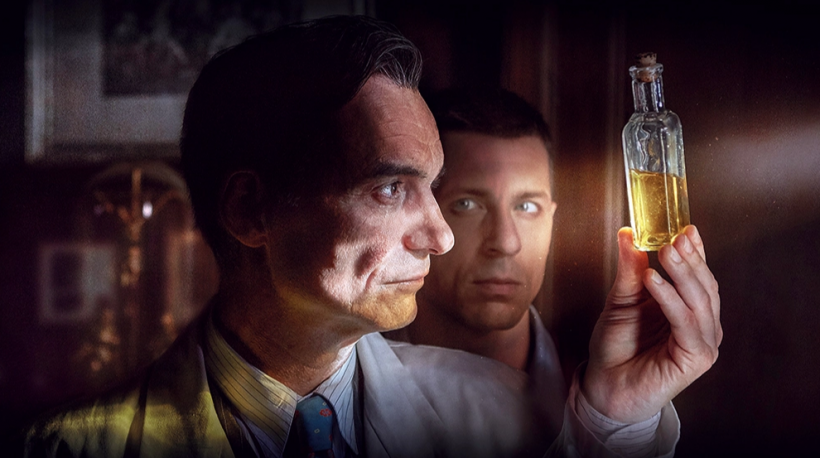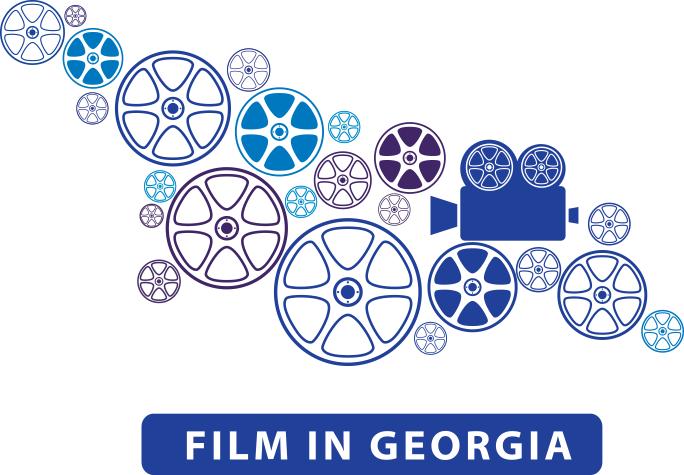 Inspirational locations: shoot subtropical, coastal, alpine mountains, desert and beautiful forest scenes in one day
Inspirational locations: shoot subtropical, coastal, alpine mountains, desert and beautiful forest scenes in one day
Teamwork Pays off for Eastern European Films

When it comes to feature film output in Central and Eastern Europe, it’s all about marshaling indie forces and breaking out of familiar tropes this year, say producers and filmmakers.
It’s also about relationships in the increasingly interconnected region, as Katarina Tomkova, one of the Slovak producers for “Servants,” says of the
communist-era drama focused on priests facing pressure to spy for the state. The fact-based idea — a Slovak, Czech, Romanian and Irish co-production that premieres in Berlinale’s Encounters section — grew out of a deal structure created “very organically, and was based on personal relationships and friendships,” says Tomkova of Slovakia’s Punkchart.
“Servants” star Vlad Ivanov was a juror at the Vilnius fest, which awarded Ivan Ostrochovsky’s previous film, “Koza,” which led to Romanian producers Oana Bujgoi Giurgiu and Tudor Giurgiu — and later composer Cristi Lolea — joining the project.
Czech producer Pavel Strnad of Negativ then mulled over “Servants” after awarding Roma boxer biopic “Koza” at the goEast festival — one of many gongs it took home — and signed on for the project with fellow producer Petr Oukropec, which meant filming in the Czech Republic and employing editor Jan Danhel.
U.K./Irish producer Mike Downey of Film and Music Entertainment had championed “Koza” at script stage and also got on board for “Servants” early, bringing in writer Rebecca Lenkiewicz (“Ida”), and setting up postproduction in Ireland together with Downey’s partner Sam Taylor.
The Czech-Irish-Polish-Slovak co-production “Charlatan,” directed by veteran auteur Agnieszka Holland offers more evidence of the power of
sometimes-complicated international joint ventures in the region. The true story of Czech healer Jan Mikolášek, starring character actor Ivan Trojan, premieres in the Berlinale Special Gala section.
Three national film funds kicked in for the 3 million ($3.25 million) budget: the Czech Film Fund, the Polish Film Institute and the Slovak Audiovisual Fund. The Prague Film Fund and Czech Film Fund’s incentive program also funded the shoot.
“Charlatan” is the result of a mosaic of players: It’s produced by Sarka Cimbalova of Marlene Film Production and Prague-based Kevan Van Thompson, and
co-produced by Film and Music Entertainment, Poland’s Madants, Slovakia’s Furia Film, Czech Television, Barrandov Studio, Radio and Television of Slovakia, the Czech CertiCon and Magiclab. So goes the process of assembling ambitious dramas in Central Europe, where a single financing body writing a check is still all but unheard of.
Another Czech film, the fantasy “Perinbaba and the Two Worlds,” by Juraj Jakubisko, is in postproduction after more than two years of filming. The
Czech/Slovak co-production will be released by Bontonfilm in both countries in the first half of 2020, offering audiences a rare glimpse of work by a filmmaker considered one of the last Central European masters of myth and fairy tales, which once held sway in the region’s cinemas.
Meanwhile, recent years of network-building in the Baltics are also bearing fruit these days: Features such as Veiko Ounpuu’s “The Last Ones,” the story of a young Lapp miner written with Finnish screenwriters Eero Tammi and Heikki Huttu-Hiltunen, will premiere in April, while Tanel Toom has won funding for his upcoming sci-fi story “Gateway 6.” Toom’s debut “Truth and Justice,” an adaptation of an Estonian literary classic about a peasant rivalry, was shortlisted for the Oscars’ international feature film category and was the highest-grossing film in Estonia’s history.
That helped propel Toom to win backing for “Gateway 6,” to be shot in English in Estonia and starring Leo Suter and Olga Kurylenko. The U.K.-Estonia-German co-production brings in Toom’s Allfilm, Germany’s Kick Film, and the U.K.’s Sentinel Entertainment and Stigma Films.
In Budapest, literary adaptations are also proving fertile ground, as seen in “The Story of My Wife,” a Hungarian-German-Italian-French co-production set in the 1920s that follows a sea captain who makes a bet with a friend that he will marry the first woman who enters a cafe. The source material, Milan Fust’s novel, was published in Hungary in 1942 but only translated into English in the 1980s, when it became a literary sensation.
The project, starring Lea Seydoux and directed by Ildiko Enyedi — who won the Berlinale’s Golden Bear with “On Body and Soul” — is produced by Monika Mecs, Erno Mesterhazy, Andras Muhi and Inforg-M&M Films with Komplizen Film, Moliwood and Pyramide Films.
Another Hungarian feature, “Eden,” by Agnes Kocsis, a metaphorical account of a woman seemingly allergic to everything, is a Hungarian-Romanian-Belgian drama that premiered this year at Rotterdam, making waves with its ironic visuals, including a protagonist destined to go through life as if on a space walk.
Serbia is also focusing on offbeat stories as is clear from Ivan Ikic’s upcoming “The Users,” a joint effort between Serbia, the Netherlands, Slovenia, Bosnia-
Herzegovina and France. A love story among teens banished to institutional care, the film was written by Ikic, who won support for a $726,000 budget from the Netherlands’ Kepler Film, Slovenia’s Tramal Films, Bosnia-Herzegovina’s SCCA/Pro.ba and France’s Les Films d’Antoine.
It’s not all about cobbling together small-shingle talents, of course, as Georgia-shot “F9,” the latest outing of the “Fast & Furious” franchise Charlize Theron and Vin Diesel, makes clear. The former Soviet republic is a rising star for location shoots, as producer Clayton Townsend points out.
“Tbilisi offered ‘Fast 9’ the rare opportunity to shoot an array of beautiful and unique locations that many audiences will be seeing for the very first time,” Townsend says, calling the franchise shoot “one of the first major projects to be filmed in Tbilisi.”
Business is likely to grow based on his experience, he adds, saying the Georgian capital’s beauty as a location was only outmatched by the quality of local crews and “the incredible support we received from the Georgian government.”
Cinematographer Phedon Papamichael (“Ford v Ferrari”), who is these days leading the charge for selling Georgia location shoots, admits it was not easy to bring the Universal Pictures blockbuster franchise to the Caucasus.
“It took some reassuring to convince a major studio that our production-service company, Enkeny Films in Georgia, could handle a large production like Universal’s ‘F9,’” he says. “They brought about 300 crew, over 30 picture cars and we bought another 120 cars for the action sequences, hired an additional 450 production crew and over 1,000 additional subcontractors to accommodate this size enterprise.”
As a result of the successful shoot, Papamichael says, major U.S. studios are now location scouting as well, hoping to take advantage of the “great diversity of unphotographed locations as well as political stability, combined with a functioning government tax rebate program.”
10 Reasons
to Film in Georgia
 Inspirational locations: shoot subtropical, coastal, alpine mountains, desert and beautiful forest scenes in one day
Inspirational locations: shoot subtropical, coastal, alpine mountains, desert and beautiful forest scenes in one day
 Unique and captivating fusion of medieval and modern architecture with Asian, European, and Soviet Styles
Unique and captivating fusion of medieval and modern architecture with Asian, European, and Soviet Styles
 Six climate zones and long sunny days
Six climate zones and long sunny days
 Fully accessible public locations free of charge
Fully accessible public locations free of charge
 Competitive financial incentives: up to 25% off
Competitive financial incentives: up to 25% off
 Easy to apply cash rebate scheme: One-stop-shop principle and no red-tape
Easy to apply cash rebate scheme: One-stop-shop principle and no red-tape
 Business-friendly environment: flexible labor market, cheap energy, and low-taxes
Business-friendly environment: flexible labor market, cheap energy, and low-taxes
 Modern infrastructure: three international airports, cargo and passenger ports, and well-connected roads and rail across Georgia
Modern infrastructure: three international airports, cargo and passenger ports, and well-connected roads and rail across Georgia
 High speed fiber-optic Internet connectivity across the country
High speed fiber-optic Internet connectivity across the country
 Film Friendly Society
Film Friendly Society





